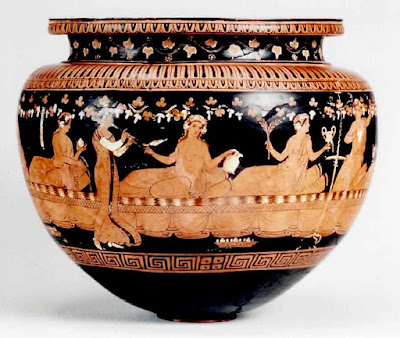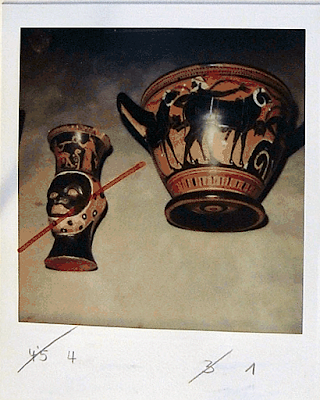 |
| New York MMA inv. L.2022.38.47 |
There are three figures attributed to the Rodgers sculptor. Two are reported to have surfaced from the same dealer, 'three years apart', and both were 'encrusted with similar hard deposits' (quotes from Getz-Gentle). One of the figures was in an anonymous North American private collection (NAC no. 52; acq. 1975) and the other in the Stern collection (and previously in the Rodgers collection; acq. 1972). The Stern figure had been reported as being derived 'from English coll., after World War II' though Getz-Gentle qualified this with the dismissive, 'information I distrust'. The third figure is in the Museum of Cycladic Art (inv. 282: Doumas no. 223). Although Getz-Gentle notes 'find-place unknown', Doumas suggested the 'possible' findspot of Koufonisia. This figure was described by Colin Renfrew as achieving 'a rhythmic effect in the curving outlines of the head, shoulders, upper arms, thighs, and calves' (Cycladic Spirit p. 86, pl. 57). No further information is provided by Aegean Waves (no. 24).
The Stern figure appears in the Homecoming exhibition at the Museum of Cycladic Art (no. 13) where it is attributed (inaccurately), along with the Athens figure, to the Rodgers master.


























